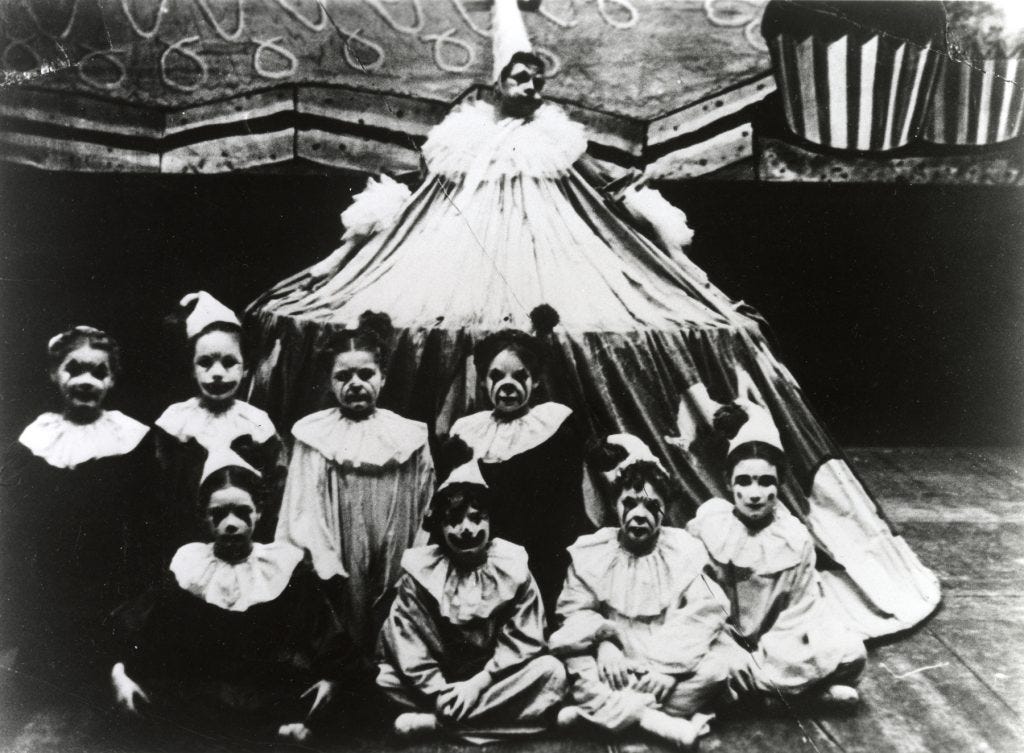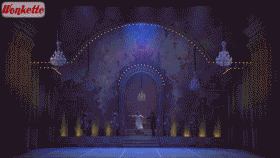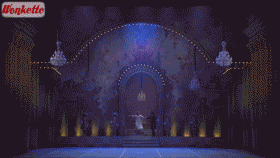Mother Ginger and the Polichinelles
Not a Motown girl group of the 1960's, as it turns out
Today we are watching a Boston Ballet performance of the Nutcracker Ballet from 2020. Specifically, we are watching the “Mother Ginger” scene from the second act of the ballet by Pytor (Peter) Ilyich Tchaikovsky.
When I was a kid, my parents would take us to see the Nutcracker every year at the San Francisco Ballet. While the dance of the Sugar Plum Fairy is the prestige dance of the ballet, my two favorite parts as a kid were the growing Christmas tree in act one and Mother Ginger and her children hiding under her skirts, the Polichinelles, in act two. When I lived in Boston, I made it a point of seeing the Nutcracker most years too. Both companies put on excellent performances.
While the Nutcracker is a favorite and a holiday staple in the US and around the world, performed by countless companies both large and small, it was not always a hit. Tchaikovsky, fresh off the success of his ballet for The Sleeping Beauty, composed the Nutcracker under a commission from Ivan Vsevolozhsky, the director of the Imperial Theatres in Russia. The plot of the ballet was to be a streamlined and shortened adaptation of “The Story of a Nutcracker” by Alexandre Dumas, itself a re-working of a story by Prussian author E.T.A. Hoffmann, “The Nutcracker and the Mouse King.” For the ballet, Tchaikovsky was partnered with Marius Petipa, a choreographer whom he also worked with for Sleeping Beauty.
The Nutcracker’s first performance was on December 17, 1892 at the Mariinsky Theatre in St. Petersburg, Russia. Audiences were largely ambivalent about the production, some critics charmed by it, but others hating it. Companies here and there in the next 50 years would continue to perform it, but it was not a big draw. The ballet would get new appreciation after a rediscovery and colorful artistic reworking by director William Christensen for the San Francisco Ballet in 1944, its first American showing. Despite the challenges of putting on a lavish production during wartime scarcity, the entire company pitched in and through creativity, thrift and hard work, created a magical show that charmed audiences. The immensely popular production was adopted as a yearly holiday staple in San Francisco drawing interest from other American companies which would add the ballet to their repertoire. George Balanchine would rework the staging of The Nutcracker for the New York City Ballet in 1954, using more children than in previous productions in the roles specified as young people, but changing choreography for the children’s roles to be less complicated in the first act and eliminating most of the children’s dances in the second act. These changes, adopted by successive companies, helped elevate the production into a holiday box-office draw: modern large-market American ballet companies generate about 40% of their annual ticket revenues from Nutcracker performances.

No matter the production, the physical requirements for playing Mother Ginger generally necessitate that one of the taller members of the company fill the role. In most companies, a male dancer takes on the part.1 The costume has to be wide and tall enough to conceal the Polichinelles until it is time for them to pop out from under Mother Ginger’s skirts. The basic idea allows for a great deal of creativity and ingenuity from company to company, but generally the costumes are elaborate and heavy rigs, requiring the dancer to stand on stilts or be proped up by another unseen dancer to give necessary height to tent over the Polichinelles and sufficient width under which a team of small dancers can fit. Boston Ballet’s Mother Ginger costume, for example, consists of a 50-pound skirt, 24 feet in circumference held in place by aluminum framing and foam and draped in almost 60 yards of fabric. The kids underneath need to be careful not to be stepped on by the dancer on stilts harnessed in to the whole contraption. An interview with one of the Polichinelles gives us a first-hand perspective on how the preparation unfolds.
Check out the link below on more fun facts about Boston’s Mother Ginger and others about the history of this ballet.
Boston Ballet: The Making of Mother Ginger
Dance Classics: The History of the Nutcracker, 12/6/18
San Francisco Ballet: "William Christensen's 1944 Nutcracker" by Sheryl Flatow
In ballet, a woman playing a man’s part or vice versa is called "en travesti.” A bit of history about the practice is found at online classical musical blog Planet Hugill. In any event, cross-dressing for the stage is hardly a new phenomenon, nor is it particularly scandalous, despite what some current-day scolds might have you believe.





Thanks for The Nutcracker story - I have another ‘George Santos’ story myself - not about me - about my offspring (ok, maybe a little about me) -
My offspring was performing in The Wizard of Oz (first act - Lullaby League - I think) - I was in all the acts (that was my George Santos part) - anyway -
The Moscow Classical Ballet (them Russkies) came to town and needed a lead child ballet dancer - unfortunately almost all the dancers in town were already in other local productions of the Nutcracker or other Holiday shows - so my offspring had to be ferried across town (after performing in Oz) in the back of the mini van being dressed and doing hair - then she had to be sewn into her costume by a Russkie? speaking seamstress - then she had to lead the other children on stage and keep track of them off stage - it was amazing (as is my daughter of course) - I don’t know how to post pictures here ;/
my favorite memory of Christmas was meeting my dad in the city and going to see The Nutcracker at the Philadelphia ballet. Thanks for the memories!!